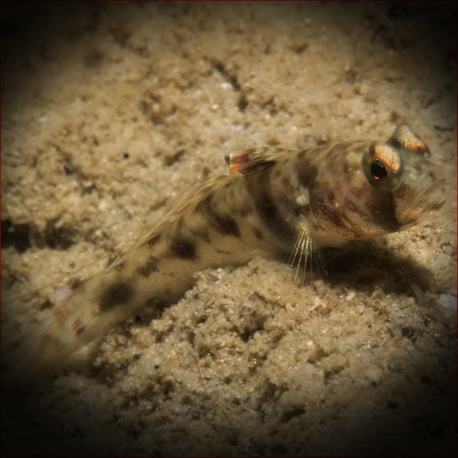More info
Datasheet
| Minimum Tank Size | 100 litres / 26.42 US gallons |
| Maximum Size | 8.0cm / 3.15inches |
| Reef Compatible | Always reef safe |
| Temperament | Mostly peaceful but might be aggressive towards similar species |
| Temperature | 22.2°C / 71.96°F - 25.6°C / 78.08°F |
| Specific Gravity | 1.020-1.025 |
| Carbonate Hardness | 8-12 |
| pH | 8.1-8.4 |
General Description
The Bigfin shrimpgoby (Vanderhorstia macropteryx) belongs to the Gobiidae family and can reach a maximum size of approximately 8.0cm. This species is known for its symbiotic relationship with Pistol shrimps of the genus Alpheus, living together in a small hole in the sand or under a stone.
Aquarium Suitability
Suitable with care, the Bigfin shrimpgoby can thrive in a tank with a minimum size of 100 liters. However, it is recommended to provide a larger aquarium to better meet its needs.
Demands, Care and Hardiness
Considered to have average hardiness, these fish prefer a substrate that allows them to burrow, such as sand, coral pieces, shells, and small broken pieces of shells. Frequent feeding, multiple times a day, is essential for their well-being.
Reef Suitability
The Bigfin shrimpgoby is known to be always reef safe, making it a suitable choice for reef aquariums.
Aquarium Setup
Setting up the aquarium for a Bigfin shrimpgoby involves arranging rocks to allow the fish to create a hole underneath and ensuring they are secure. The substrate should have ample space for them to dig holes, which should be at least 1.5 inches (3 cm) longer than their body to prevent stress.
Behaviour
These fish are mostly peaceful but can display aggression towards similar species, enjoying their own territory within the aquarium.
Feeding and Diet
The recommended diet for the Bigfin shrimpgoby includes small crustaceans like krill, mysis, and artemia, as well as zooplankton such as cyclops and pods.
Dimorphism and Captive Reproduction
No information provided.
Habitat and Distribution
The Bigfin shrimpgoby is typically found in waters around Australia, Japan, Indonesia, and New Zealand, residing close to the bottom in sandy or rocky substrates.

